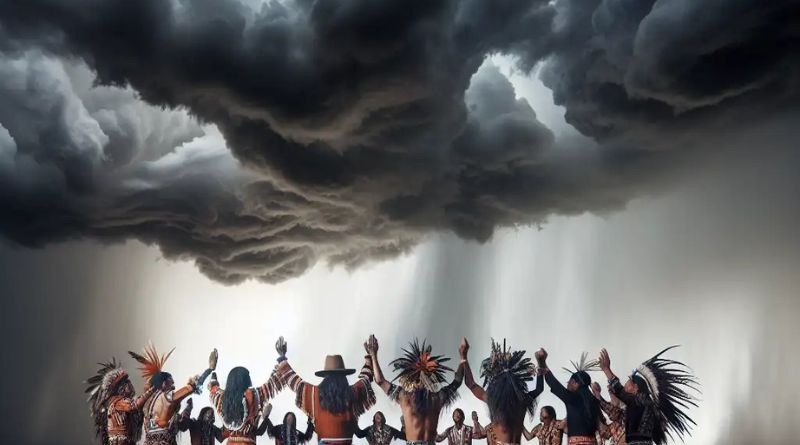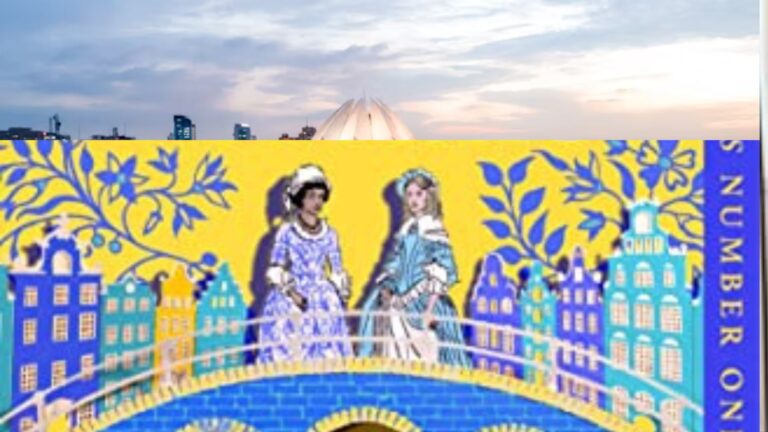
Rain is a vital resource for life on Earth, and throughout history, humans have turned to various rituals and ceremonies to ask for its arrival, especially in times of drought or when crops depend on it for survival. One such ritual that has captured the public’s imagination is the raindance. Originating in different cultures around the world, the raindance is often seen as a spiritual or ceremonial act meant to invoke the blessing of rain. But what exactly is a raindance, and where did this practice come from? In this article, we’ll explore the history, symbolism, and significance of raindances, as well as how they are practiced today. We’ll also answer some frequently asked questions to clarify common misconceptions.
Table of Contents
What is a Raindance?
A raindance is a ceremonial dance or ritual performed with the belief that it will bring rain. These dances have been part of many indigenous and ancient cultures and are particularly associated with Native American tribes, although various forms of raindances are practiced in different parts of the world. The purpose of the dance is to ask the spirits, gods, or natural forces to send rain, which is necessary for the growth of crops, especially in areas dependent on agriculture.
Raindances are typically performed in communities where rain is scarce or unpredictable, and the need for water is crucial for survival. Dancers often move in rhythmic patterns, accompanied by chanting, drumming, or singing, as a way to appeal to the elements. While the specific details of these dances can vary widely between cultures, they share a common belief that human interaction with the environment can influence natural events like rain.
The Historical Significance of Raindance
In Native American culture, particularly among tribes such as the Hopi, Zuni, and Pueblo peoples, the raindance has deep religious and agricultural roots. The belief that human actions, rituals, and ceremonies can influence the weather is central to the spiritual worldview of many Native American cultures. The Hopi people, for example, consider the raindance to be a sacred act that is tied to the survival of their crops, especially corn. In these communities, the raindance is not simply a physical activity but a spiritual practice that reflects the connection between people, the earth, and the divine.
Raindances were often performed at specific times of the year, such as during the planting season, when the community hoped for rain to nurture the crops. These ceremonies were an essential part of the agricultural cycle and were meant to reinforce the belief that nature is a gift that must be respected and tended to in order for balance and harmony to be maintained.
Beyond North America, the concept of the raindance can also be found in other cultures around the world. In parts of Africa, for instance, communities that rely on agriculture may hold rituals to summon rain, including dances, prayers, and offerings. Similarly, in ancient civilizations like the Mayans and Aztecs, rain gods were worshipped through dances and ceremonies to ensure successful harvests.
Symbolism and Elements of a Raindance
A raindance is not simply about performing physical movements; it is about symbolizing an offering to nature or the divine, asking for help in times of need. There are several key components that make up a typical raindance, and these vary according to culture. Below are some of the elements that are often seen in a raindance:
- Rhythm and Movement: The rhythm of the dance is crucial. The repetitive nature of the movements serves to focus the mind and spirit of the dancers. The movements often mimic the natural world or the actions that would be associated with rain, such as the flow of water, the rising mist, or the movements of clouds.
- Chants and Songs: Along with the physical dance, chants and songs are often used to invoke the spirits or gods of rain. These chants may include prayers for rain or expressions of gratitude for the earth and its bounty.
- Costumes and Symbolic Dress: Many cultures incorporate costumes, feathers, beads, or painted symbols into their raindance attire. These items can have symbolic meanings, representing elements of nature such as water, clouds, or earth. In some cases, masks are used to embody deities or spirits associated with rain.
- Drums and Musical Instruments: Drums and other percussion instruments are often used in a raindance to create a rhythmic beat. The sound of drumming is believed to be powerful and energizing, helping to connect the dancers with the spirits of nature.
- Offerings and Rituals: In some cultures, the dance may be accompanied by offerings such as food, water, or symbolic objects to the gods or spirits. These offerings are intended as gifts in exchange for the rain that the community hopes to receive.
Raindance in Modern Times
Today, the raindance is no longer solely a traditional agricultural practice but has evolved in various ways. While many indigenous groups continue to practice raindances for cultural and spiritual reasons, the meaning behind the dance has also extended into other realms.
In popular culture, the concept of a raindance has often been romanticized, depicted as a way of invoking nature’s power or magic. Some people engage in raindance-like rituals as a form of self-expression, personal empowerment, or even as a fun, symbolic way of “calling down” the rain for a community event. There are also modern versions of the raindance practiced by those interested in spiritual rituals or alternative healing methods.
In some areas, especially where droughts are a concern, people may still perform raindances as a way to bring attention to environmental issues, such as water conservation and climate change. The symbolism of the raindance can serve as a reminder of the importance of water and the need to protect natural resources.
Frequently Asked Questions (FAQs) about Raindance
1. What is the purpose of a raindance?
The main purpose of a raindance is to request rain from the gods, spirits, or natural forces. It is traditionally performed in cultures where rain is needed to ensure a good harvest or to provide water during droughts.
2. Which cultures practice the raindance?
The raindance is most commonly associated with Native American tribes such as the Hopi, Zuni, and Pueblo peoples. However, similar dances and rituals are practiced in various cultures around the world, including parts of Africa and Central America.
3. Is a raindance effective in bringing rain?
While the effectiveness of a raindance in bringing rain is not scientifically proven, it is deeply meaningful in cultural and spiritual contexts. It is believed that the dance and accompanying rituals help connect people to nature and encourage a positive relationship with the environment.
4. How does a modern raindance differ from traditional practices?
Modern raindances are sometimes performed more as cultural celebrations or symbolic events rather than for practical purposes like calling rain. They may be incorporated into community gatherings or spiritual rituals but are not always directly linked to agricultural needs.
5. Can anyone perform a raindance?
Yes, anyone can participate in or create their version of a raindance, although it is important to respect the cultural significance of the practice and its origins. Many communities with deep ties to the raindance have specific customs and beliefs associated with it.
Conclusion
The raindance is a fascinating and powerful tradition that connects human beings to the natural world and embodies the belief that we can influence our environment through our actions. Whether in ancient times or today, the raindance serves as a reminder of our dependence on the elements and our desire to live in harmony with the earth. From Native American rituals to modern interpretations, the raindance continues to inspire people to engage with nature, celebrate life, and seek balance.





